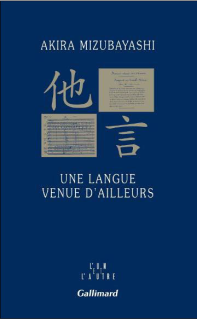One of my many delightful roles as Head of School involves introducing our students to people who do not yet know them. Such was the case last year when we were fortunate to receive a visit from the French writer Daniel Pennac. I was lucky to share a short breakfast with this author right before his meeting with our secondary classes and our conversation soon turned to the special relationship Lycée Français students have with language.
There is no doubt that the plurilingual environment which prevails at our school provides our students with something quite unique. With some 50 national cultures present among our 1000 families, we are proud indeed that our educational community includes speakers of languages ranging from Arabic to Russian to Greek to Portuguese… and the list goes on.
50 to 75% of our curriculum is in French
Moreover, the Lycée Français is a bilingual school, with between 50% and 75% of our curriculum in French and the remainder in English, depending on grade level and program choices (nb. a friendly reminder that we are co-organizing with the Cultural Services of the French Embassy a live-streamed conference on the nature of bilingualism in our Cultural Center on Saturday, April 13 (http://living-with-two-languages.info/).
In addition, we ask our students to study languages other than French and English, integrating Mandarin into our mainstream curriculum in third, fourth and fifth grade, and then requiring that students choose what we call a “modern foreign language” or “langue vivante” in sixth grade, at which point some of our young linguists will decide to continue Chinese, while others will elect to begin German, Italian or Spanish.
If I am highlighting this aspect of our educational program today, it is because several parents of fifth grade students have approached me during the past few months to ask about the criteria they might use when helping their children to choose one “modern foreign language” over another at the start of middle school. With the deadline for making this decision looming in April, whole families seem to have been engaged in discussions about language.
A three-step process
My thoughts have been simple. When students are unsure about which choice of “langue vivante” to make at the beginning of sixth grade, I am a strong advocate for the following three-step process.
1. Parents and educators should start by explaining that regardless of the language they decide to add in middle school, students will be embarking on an extraordinary adventure. More than anything else, learning a new language means discovering a new culture.
2. Families, again with the support of our educational team, should then do everything possible to present each of the cultures behind each of the languages from which students can choose as being just as fascinating and enriching as the next. And if one culture happens to be better known than the others, we have an obligation to remedy that imbalance by ensuring that all cultures are represented in equal detail.
3. Given the importance of motivation in language learning, we should place the final decision about whether it will be German or Italian or Mandarin or Spanish in the hands of the students themselves. In the end, it is their affinity with the culture unfolding behind the vocabulary, grammar and syntax which they will be studying that will make the difference.
“I attached myself to this language and she adopted me”
Which brings me back to Daniel Pennac and a book about language he recommended when we met that morning some months ago, a memoire by the Japanese author Akira Mizubayashi, entitled Une langue venue d’ailleurs. This text tells the story of how Mizubayashi fell in love with French when he was in his late teens, in large part because of the passion he felt for 18th Century France. He writes, “French is the language in which I decided one day to immerse myself. I attached myself to this language and she adopted me… (Une langue venue d’ailleurs, Paris : Gallimard, 2011, p. 19).”
By learning French, Mizubayashi explains that he was able “to restart a life which had barely just begun, to revisit my links with all manner of faces and landscapes, to remodel and reconstruct each and every one of my relationships with the other, in short to renew completely my sense of being in the world (p. 56).” It is nothing less than this same exhilaration at discovering another culture and by extension another plane of the human experience which we wish for our young linguists, beginning with those who are about to enter middle school. Dear rising sixth graders, may your choice of language for next September be as wonder-filled as possible!
About the Author :
Sean Lynch was Head of School at the Lycée Français de New York from 2011 to 2018, after having spent 15 years at another French bilingual school outside of Paris: the Lycée International de St. Germain-en-Laye. Holding both French and American nationalities, educated in France (Sciences Po Paris) and the United States (Yale), and as the proud husband of a French-American spouse and father of two French-American daughters, Sean Lynch has spent his entire professional and personal life at the junction between the languages, cultures and educational systems of France and the United States. In addition to being passionate about education, he loves everything related to the mountains, particularly the Parc National du Mercantour.


